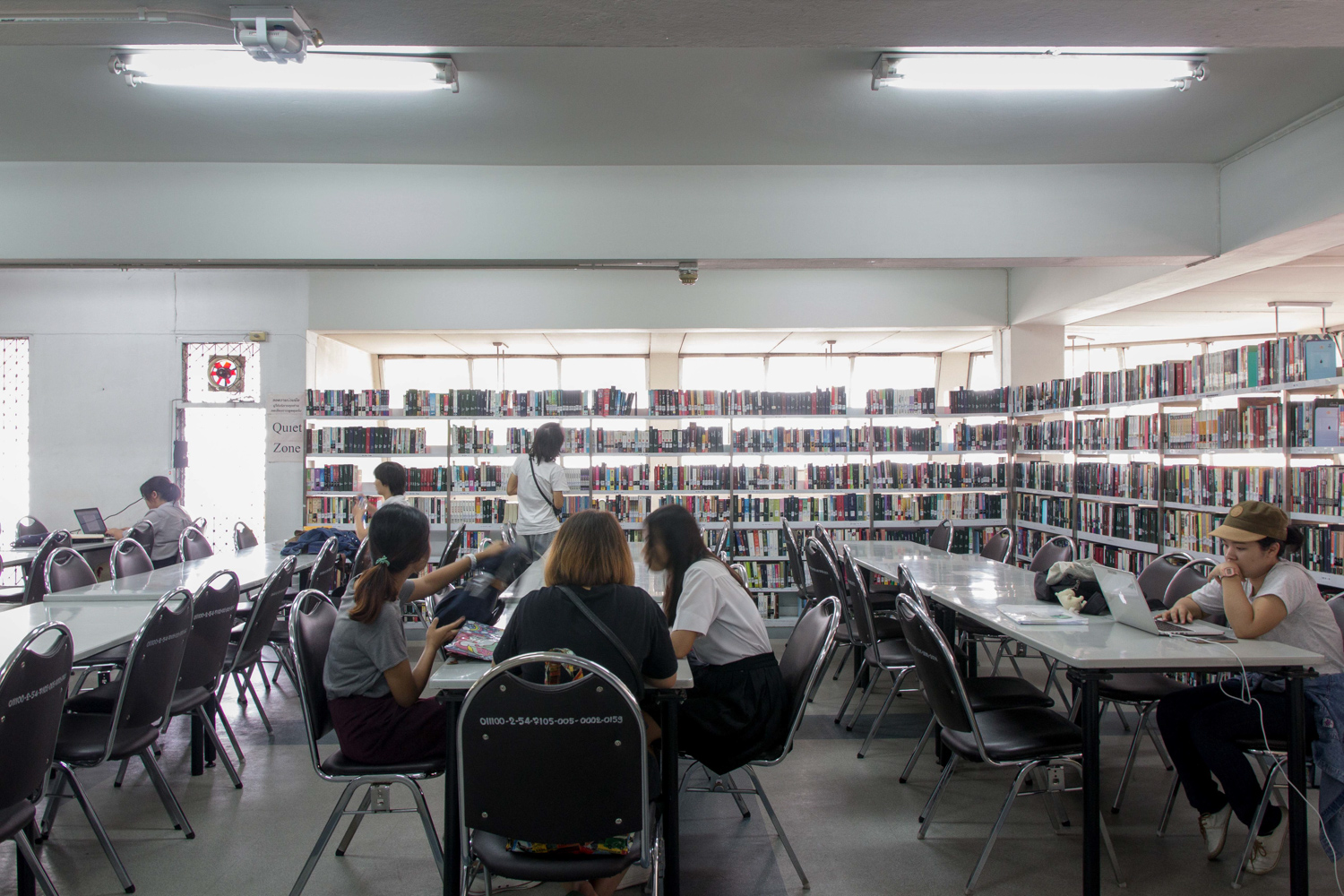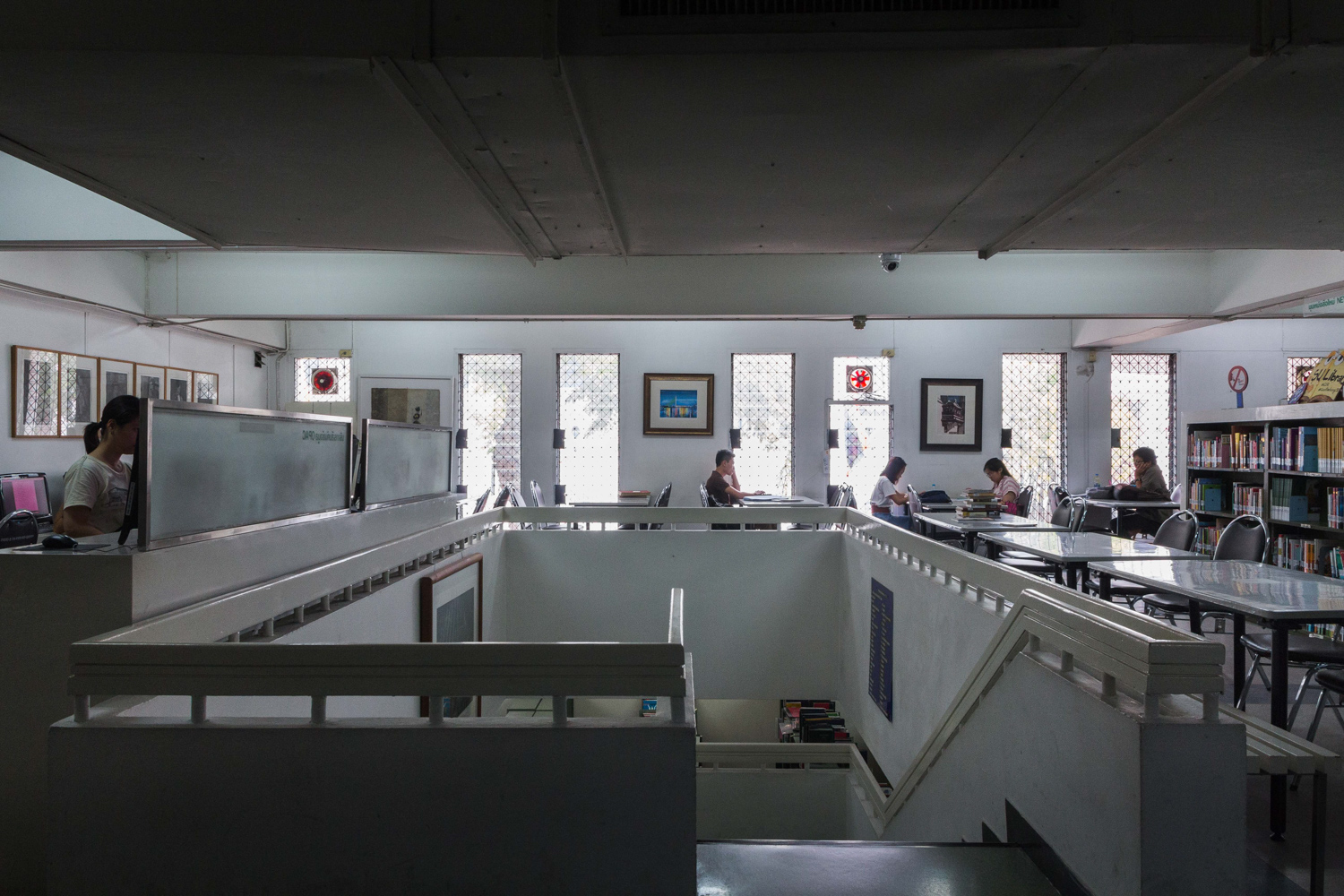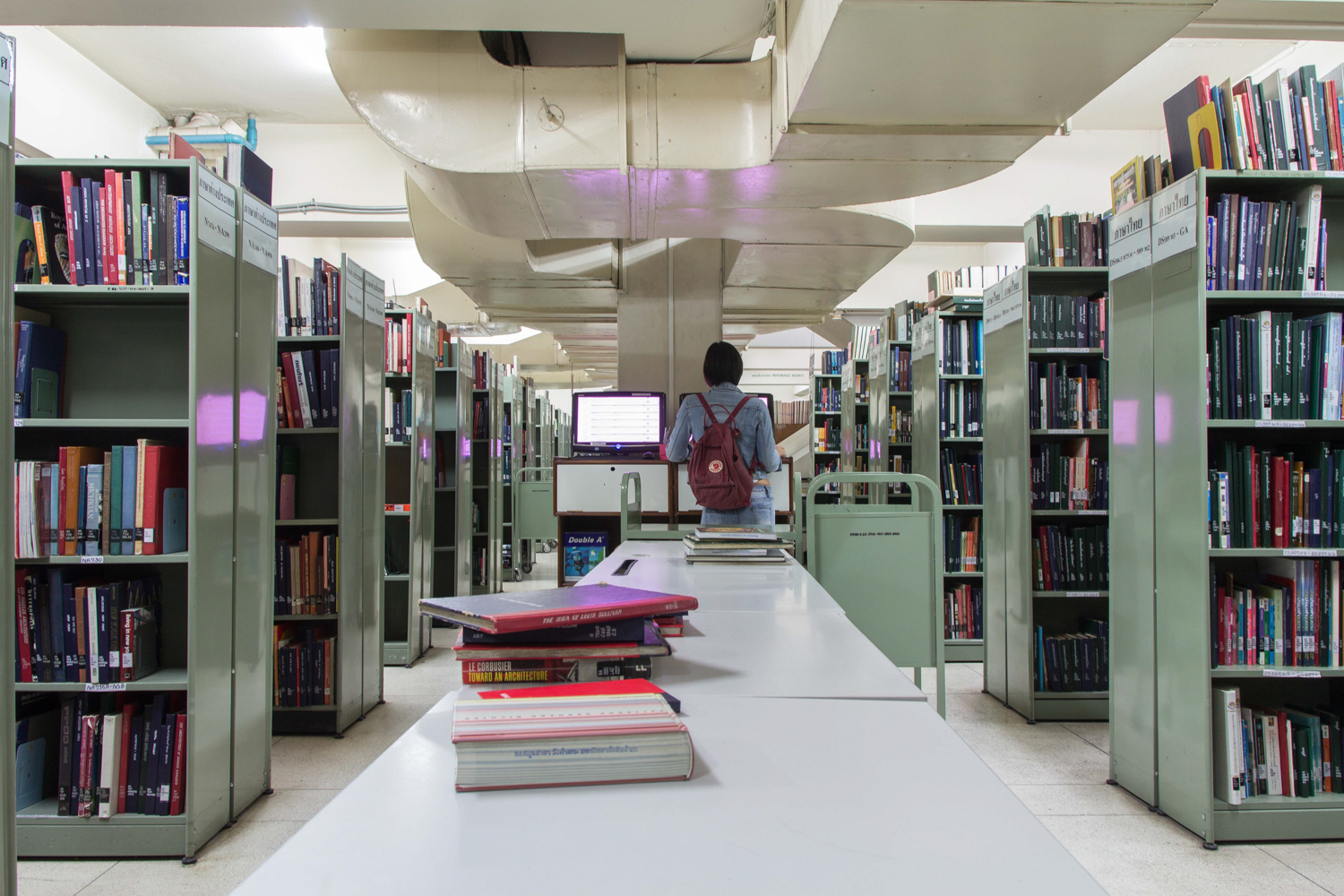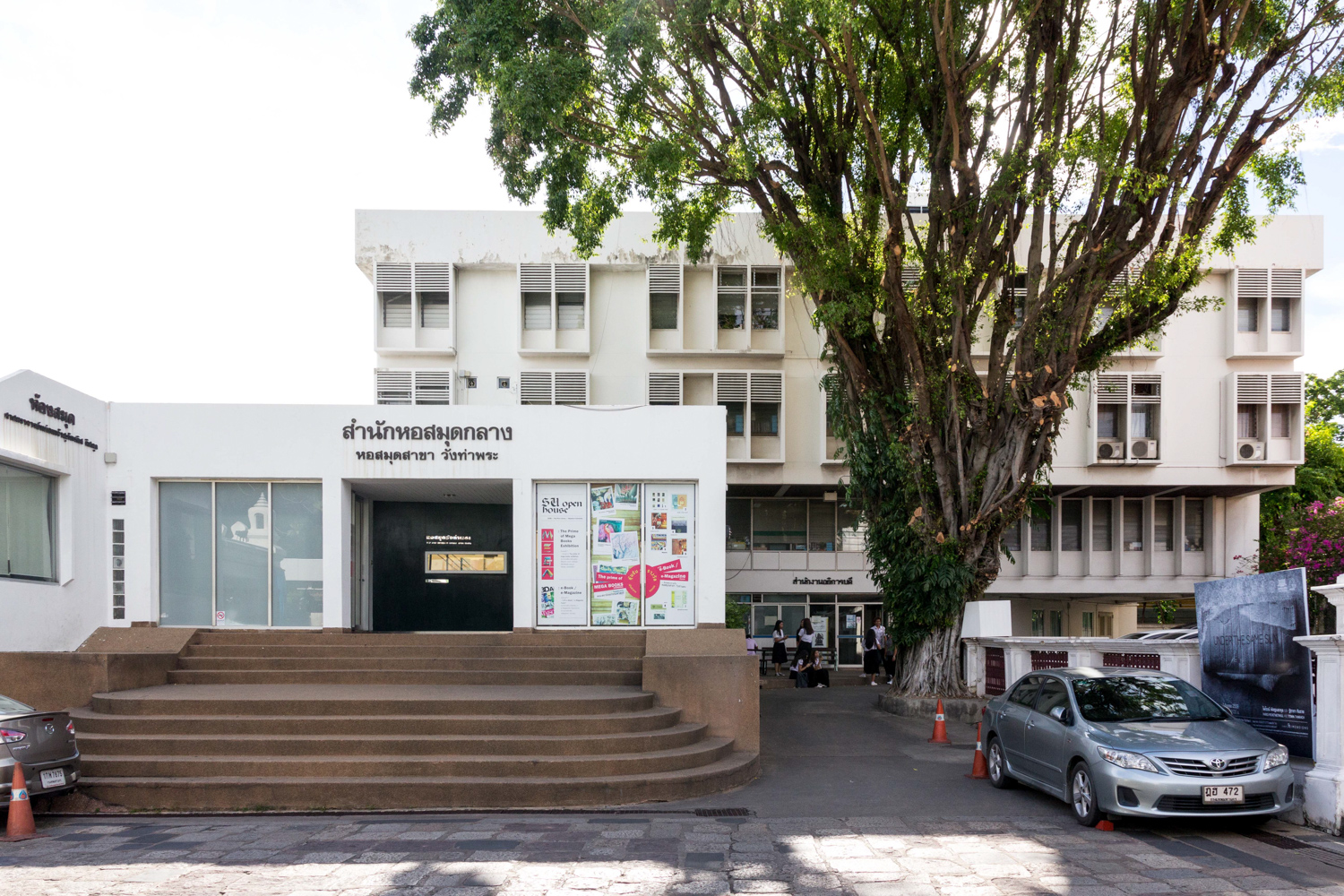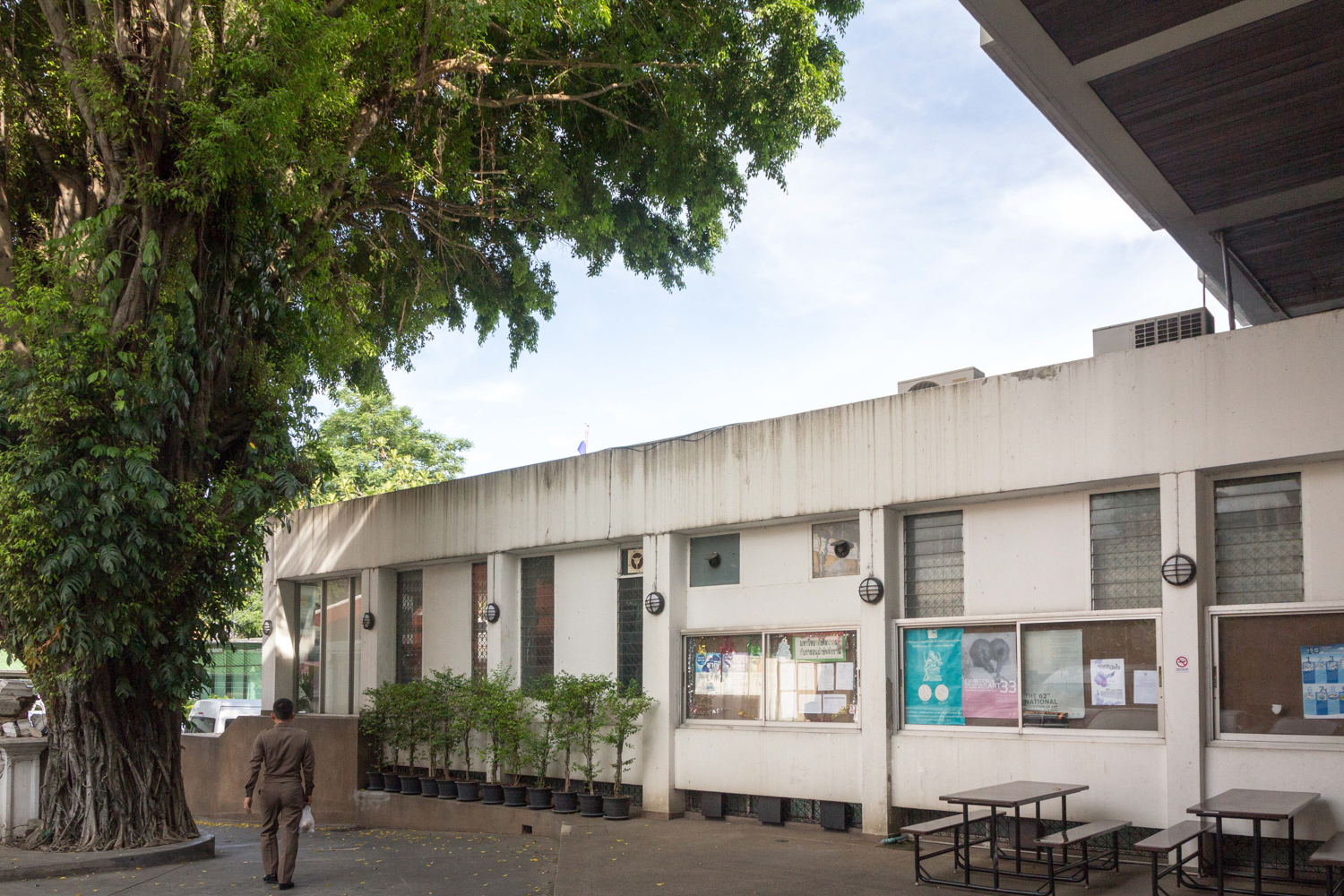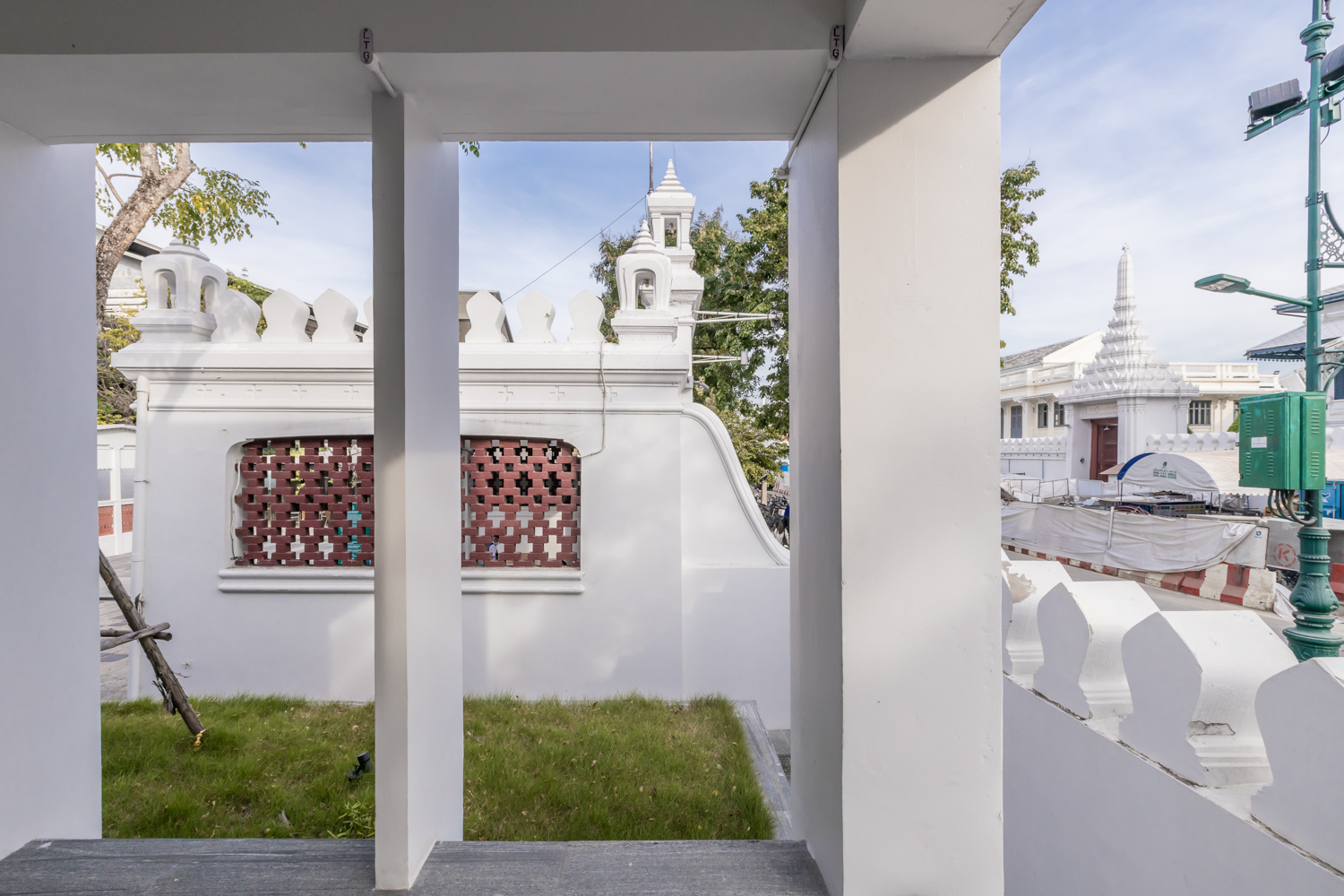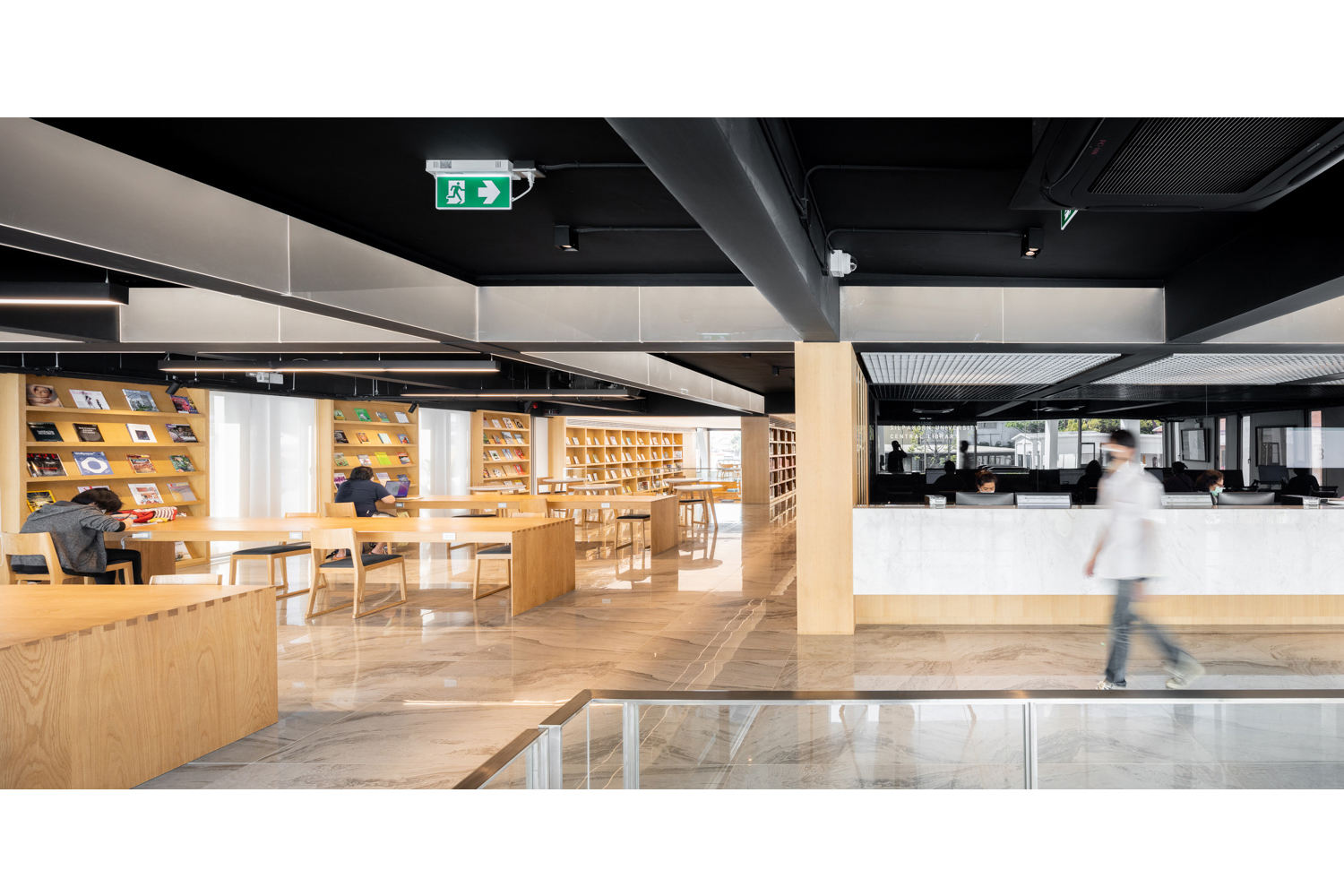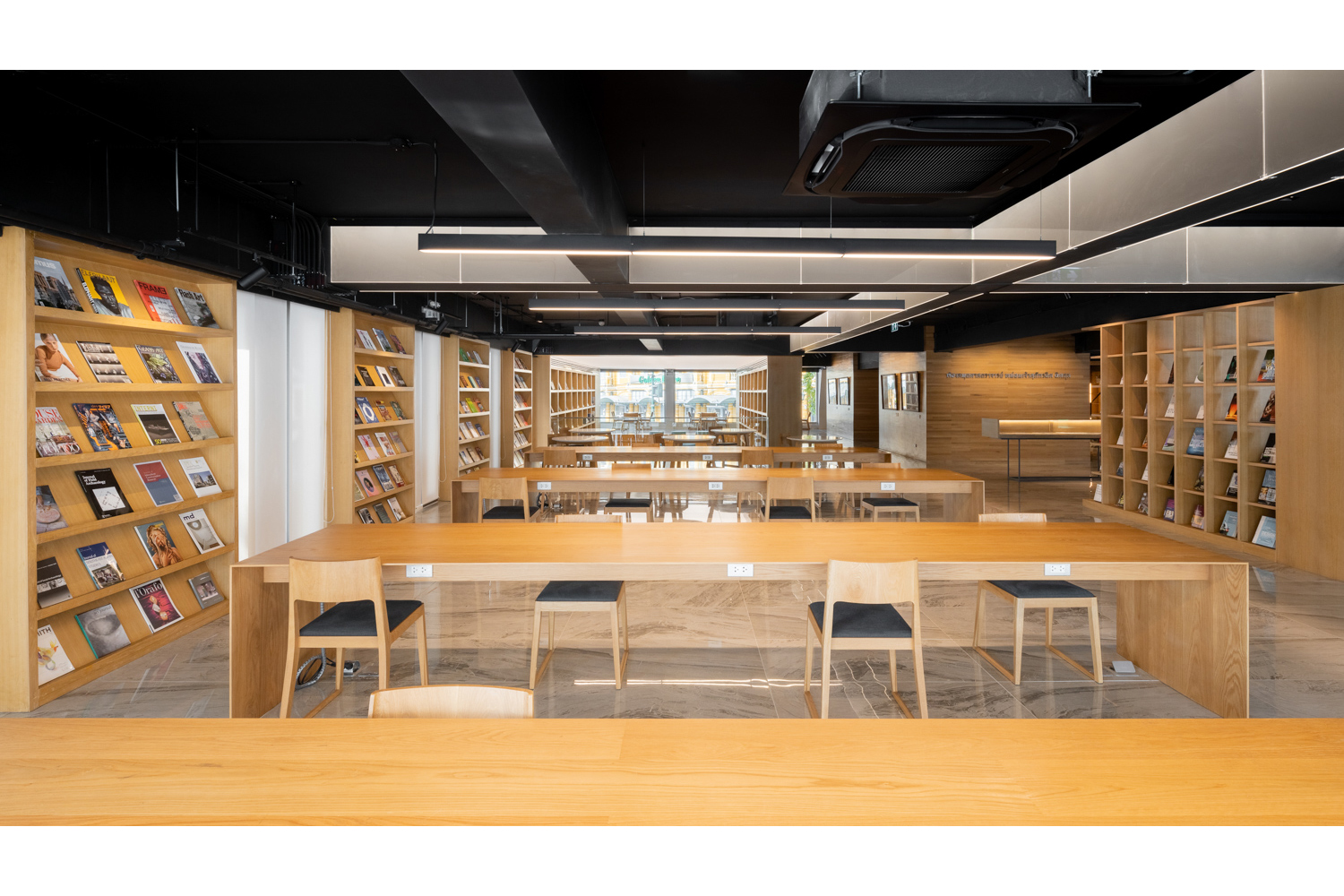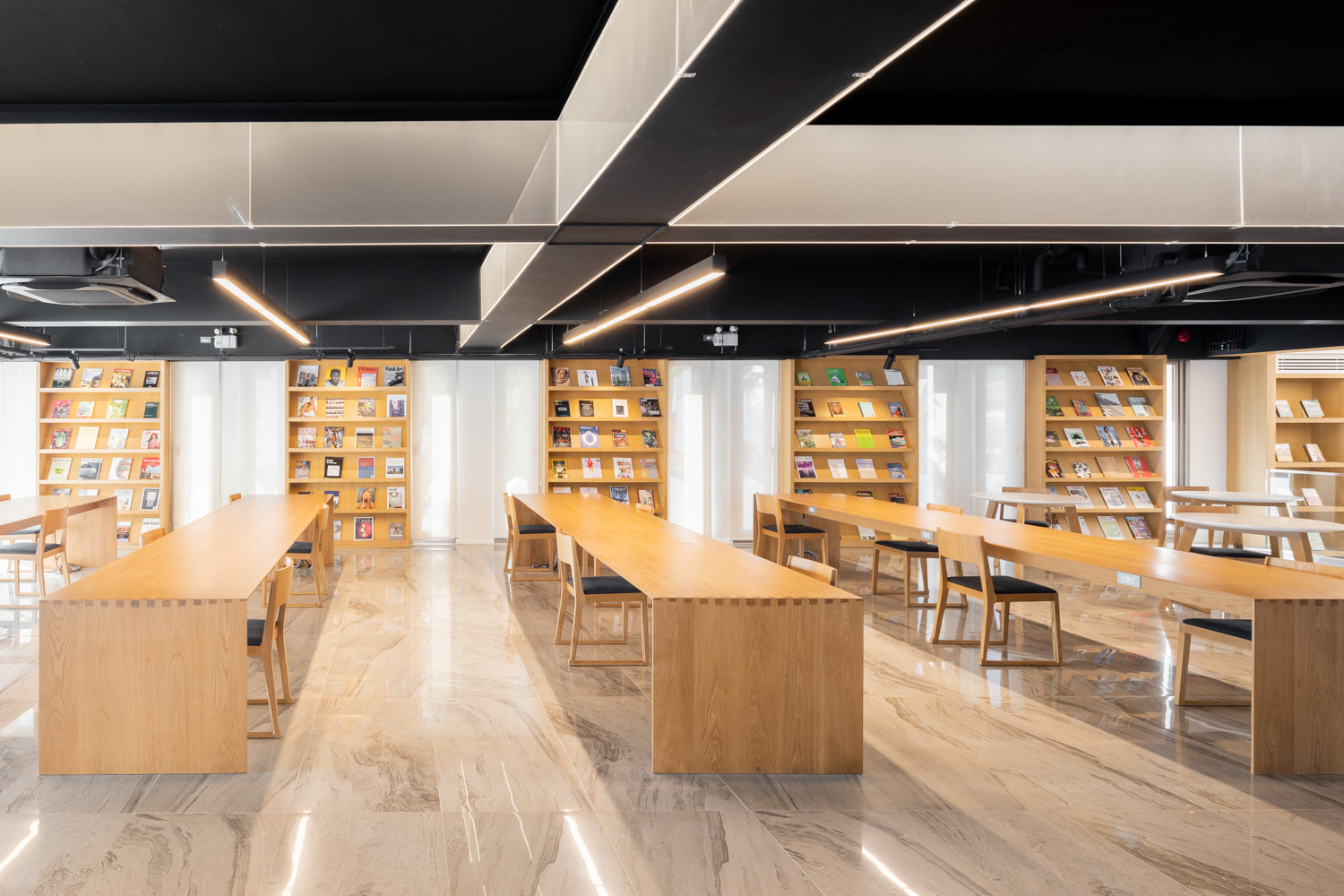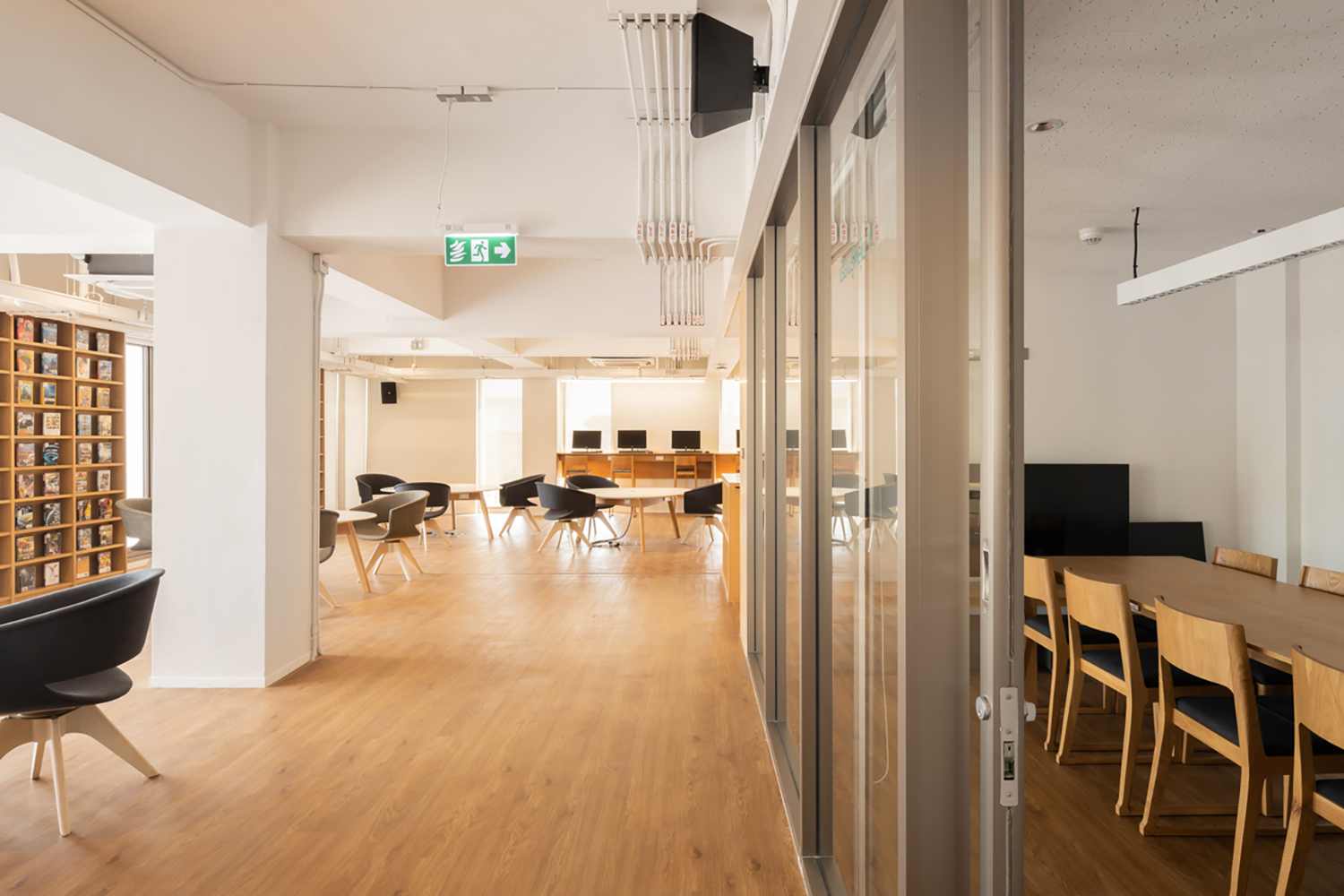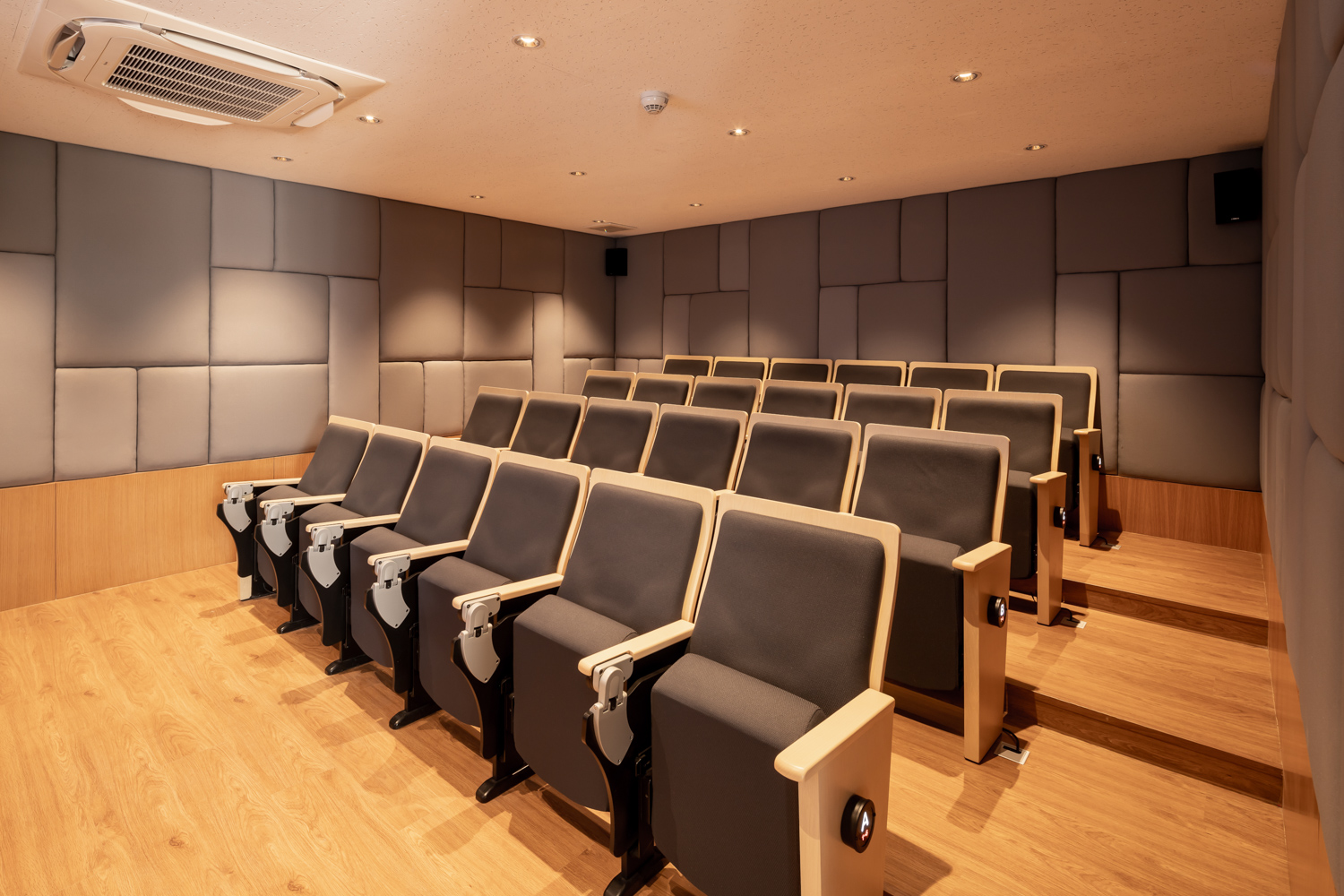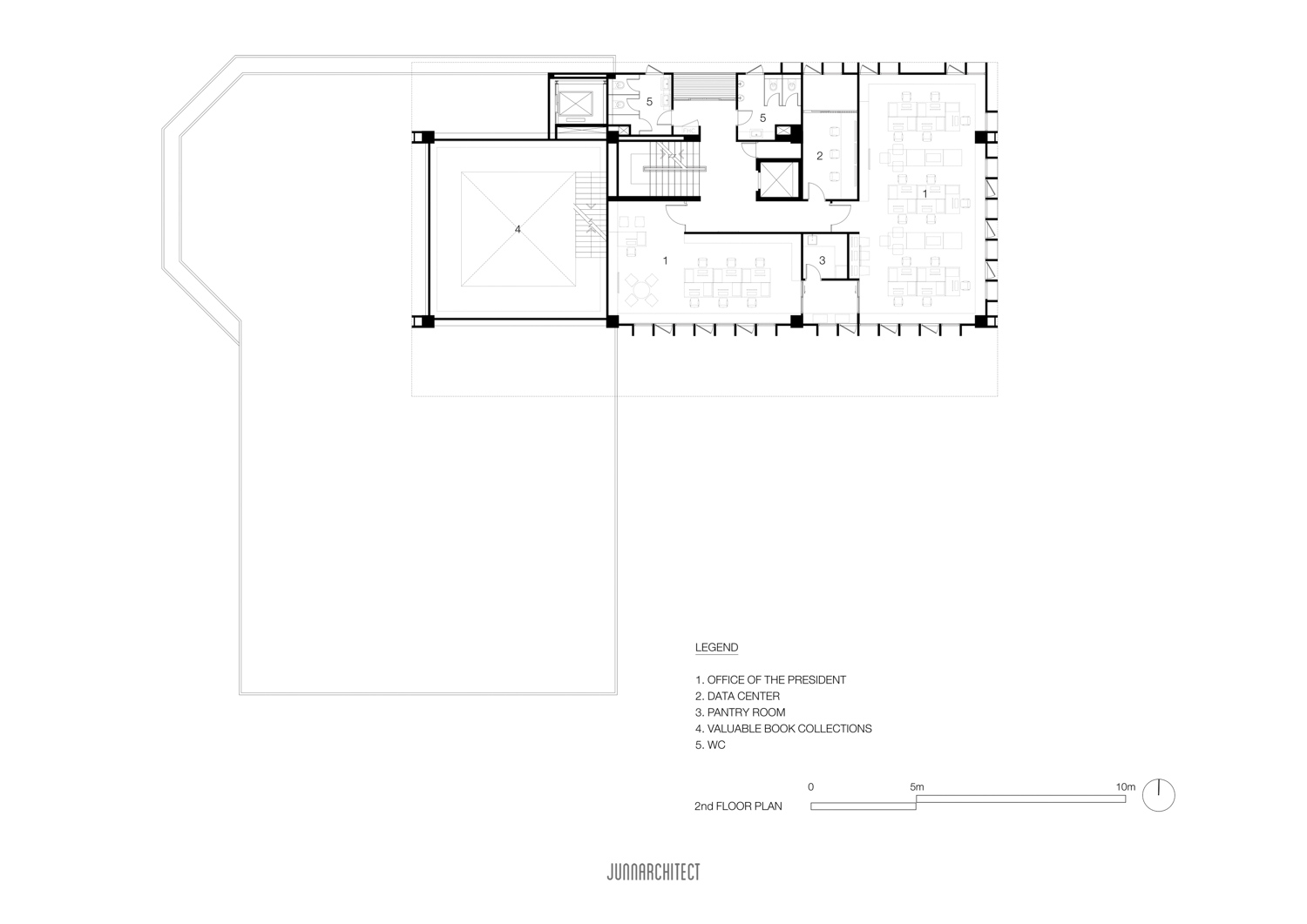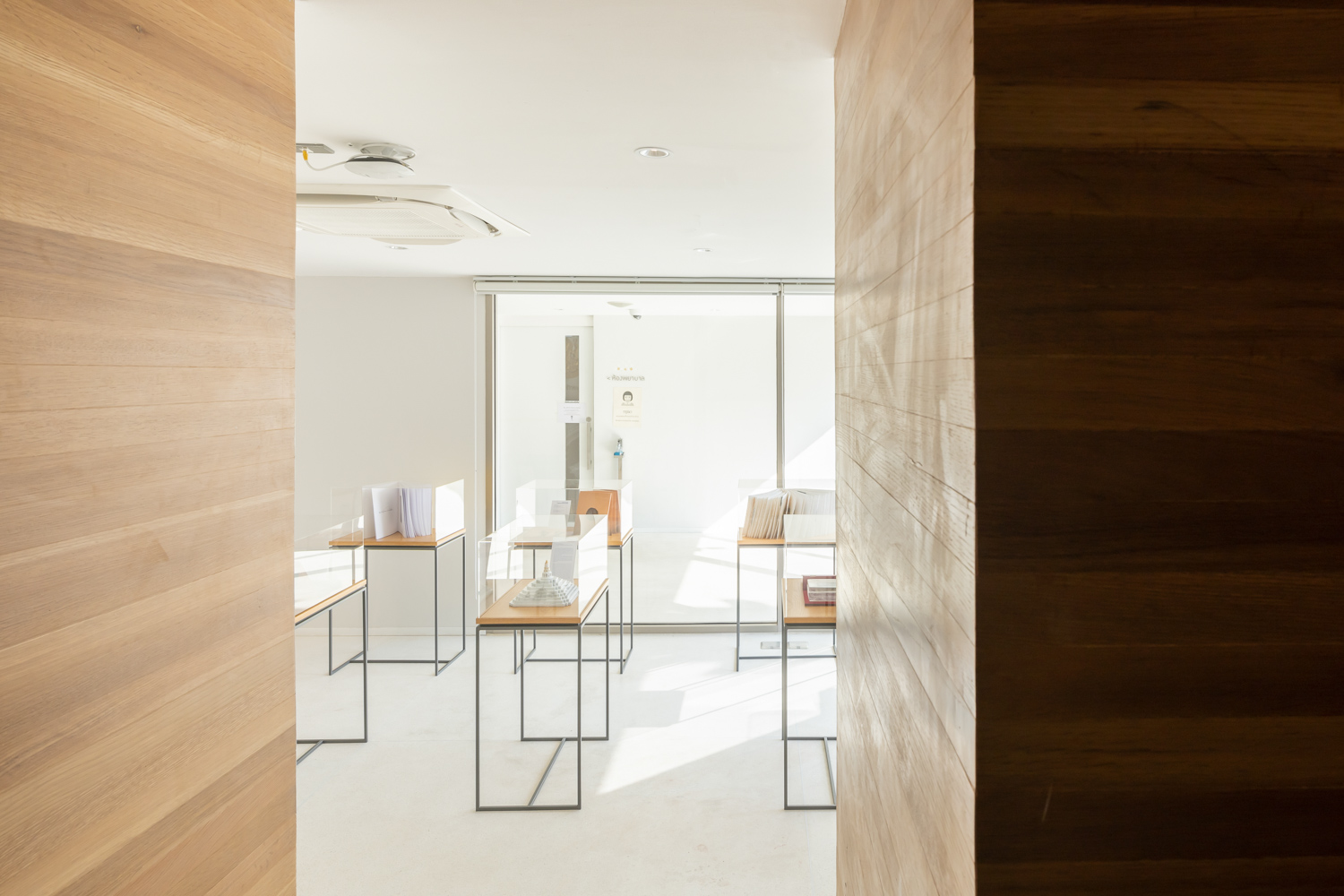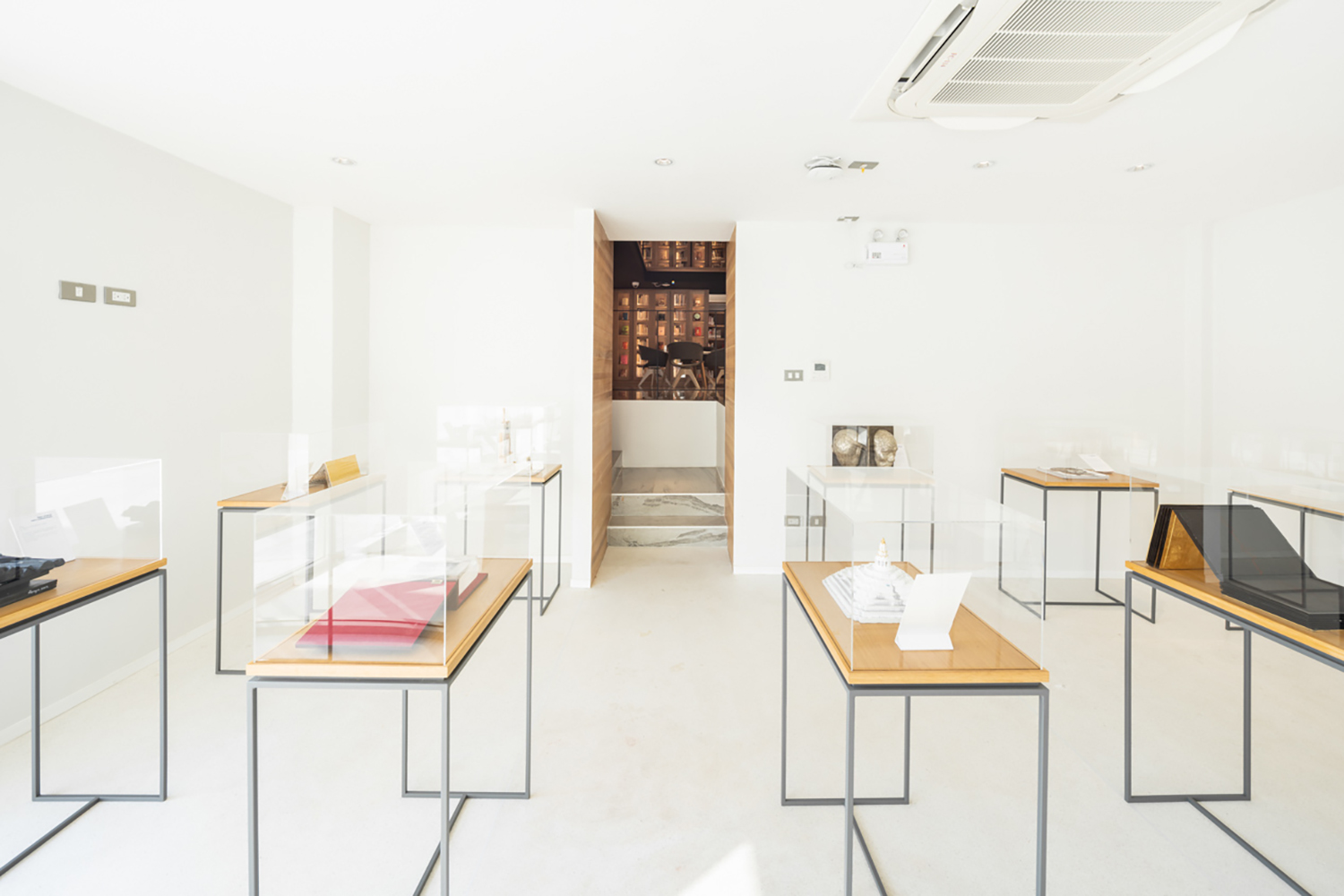AFTER SIX YEARS OF BEING A CONSTRUCTION SITE, THAPRA PALACE LIBRARY, SILPAKORN UNIVERSITY IS NOW UNVEILED AND EXHIBITS ITS DESIGN CONCEPT ‘BORDERLESS’ WHICH IS THE CONNECTION OF VARIOUS AREAS IN THE CAMPUS TO CREATE A SPACE FOR CREATIVITY AND FULFILL THE STUDENT’S CAMPUS LIFE
TEXT: NAPAT CHARITBUTRA
PHOTO: KETSIREE WONGWAN EXCEPT AS NOTED
(For Thai, press here)
Mathar Bunnag came back to Silpakorn University one day for a visit and said, ‘We call this place a university of creativity but nothing about the surroundings here is inspiring for people who create art.” Later in 2014, Silpakorn University received a budget to renovate its Thapra Campus, which marks the beginning of the greatest renovations that Thapra Palace Library, Silpakorn University has ever gone through. The renovation has Asst. Prof. Nantapon Junngurn, a professor from the Faculty of Architecture, and Director of Silpakorn University Central Library, sitting as the head of the design team.
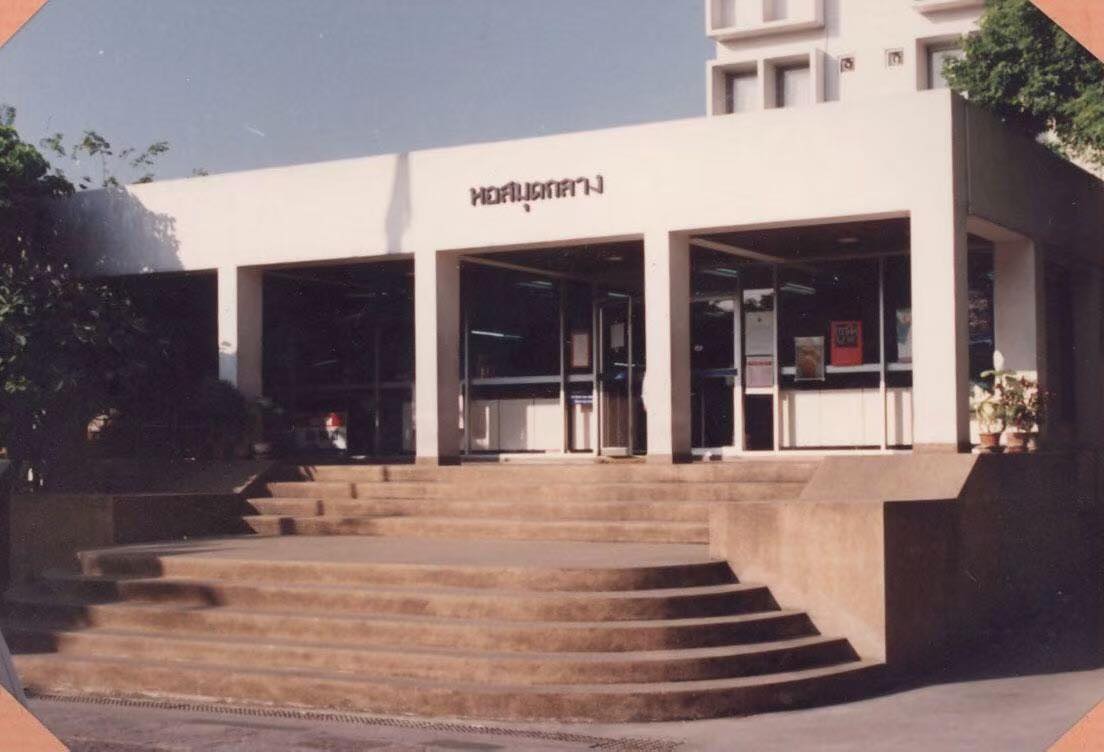
Thapra Palace Library, Silpakorn University (Before renovation) | Photo courtesy of Silpakorn University Central Library
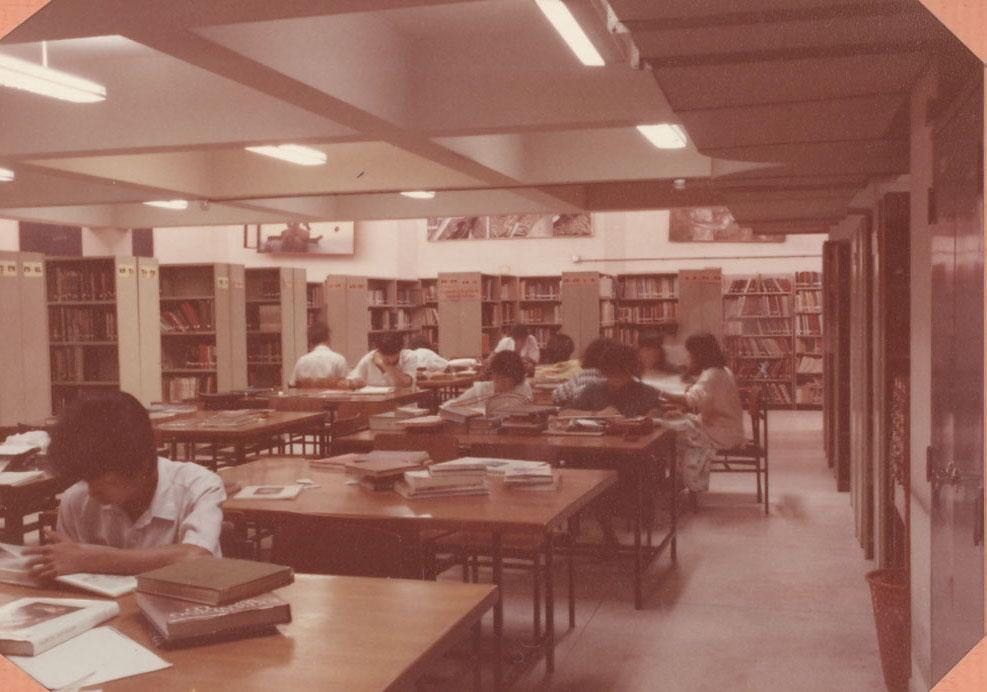
Thapra Palace Library, Silpakorn University (Before renovation) | Photo courtesy of Silpakorn University Central Library
Silpakorn University’s Thapra Campus resumes its role as a university that can fully and physically accommodate its students after 6 years of being a construction site. If it weren’t for the pandemic, we would have seen students using the newly renovated spaces at different corners of the campus, from the old conference hall that is now revamped into an auditorium hall where musical performances by students from the Faculty of Music are showcased, to playing basketball on the sports ground that is no longer a parking lot. Students would be hanging out in the Suan Kaew garden, enjoying their college student activities until late at night, and making the best use out of each faculty’s newly renovated facilities.

Thapra Palace Library, Silpakorn University (After renovation)
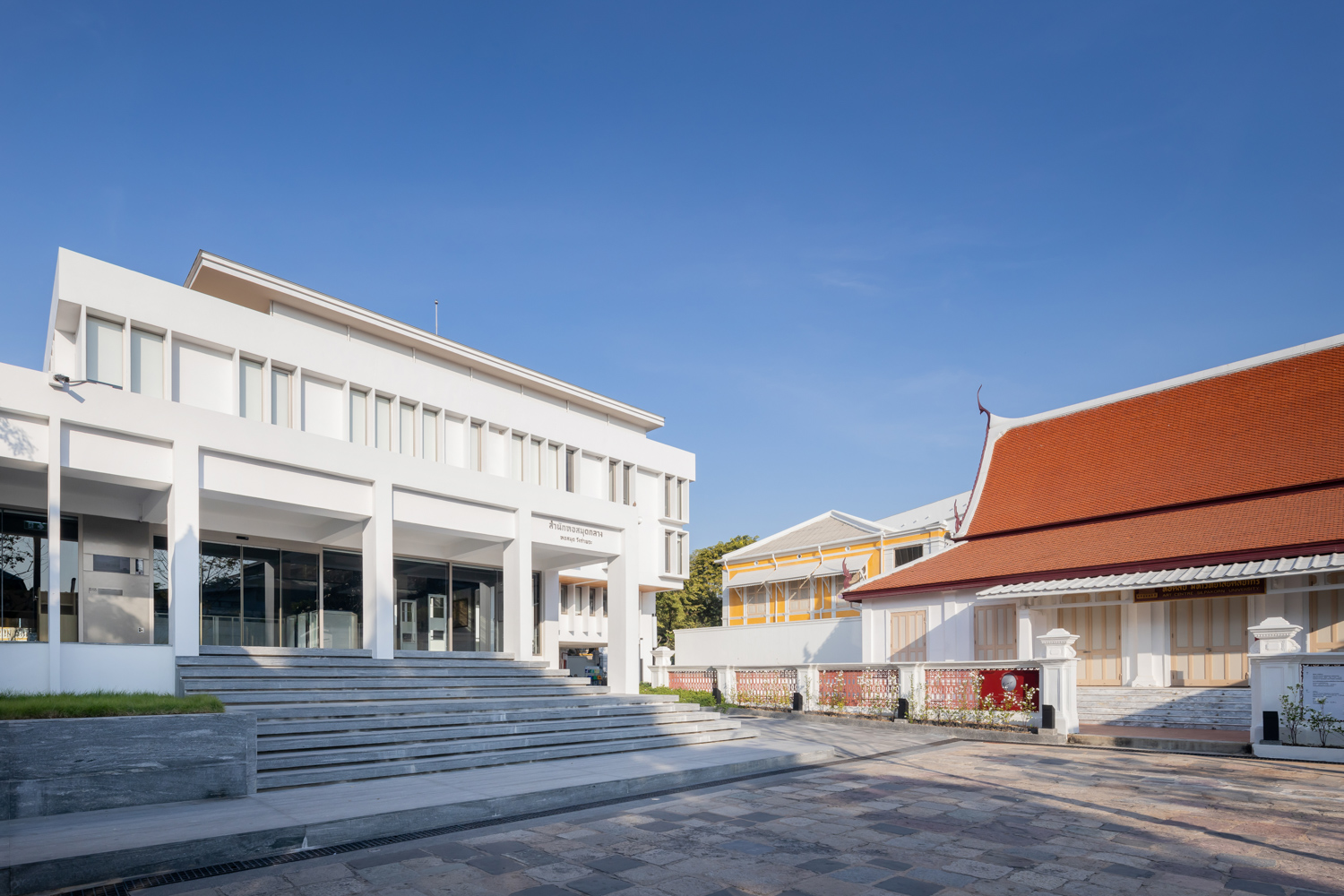
Thapra Palace Library, Silpakorn University (After renovation)
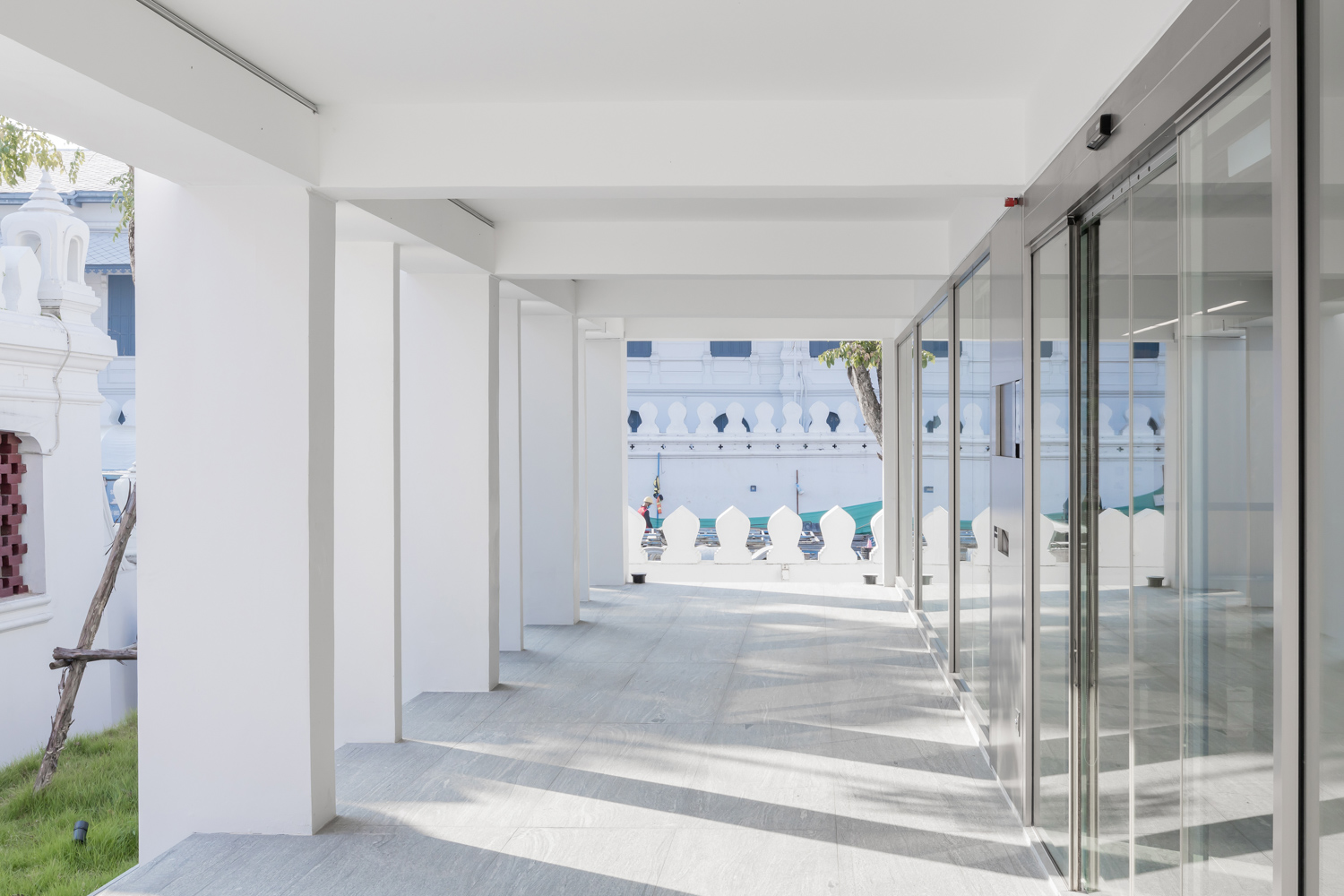
Thapra Palace Library, Silpakorn University (Before renovation)
What Asst. Prof. Junngurn’s interested in is the relationship between the spaces inside the periphery of the university and those of their surroundings. “We didn’t look at buildings but the lives existing as a part of these open spaces. The character of this campus is within the small 3.5-acre land. There is a collection of open spaces scattered throughout the university, and it is within these spaces where student campus life and experiences take place.” With the rather limited space, the students’ walking distances extend to areas around the university. “When I was a student here, I would take a walk inside the Grand Palace in the morning whenever I felt upset. Our cafeteria was small, but we have places like Tha Chang pier, Tha Prachan pier, Sanam Luang, and Chao Praya River. We are surrounded by history.”
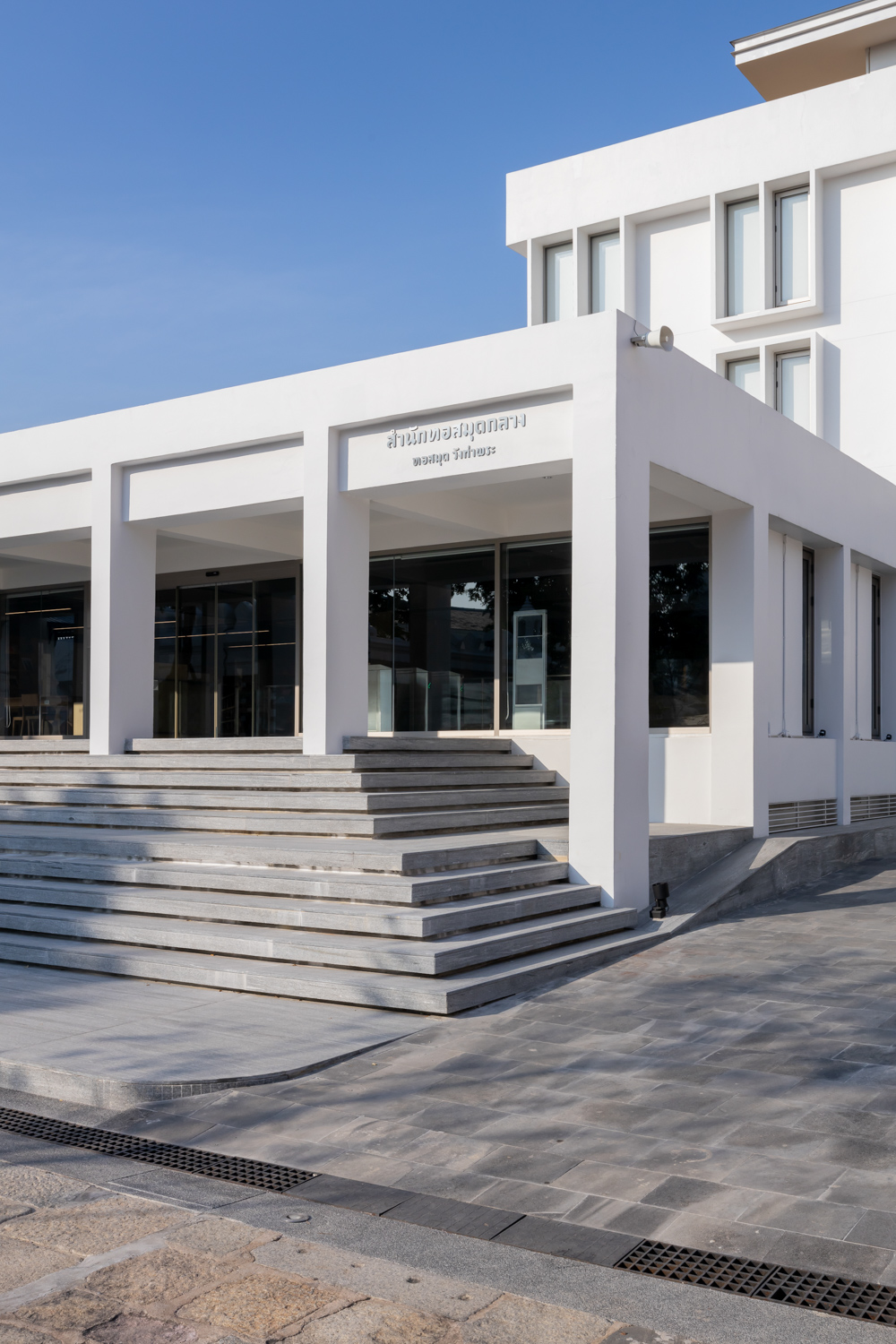
Thapra Palace Library, Silpakorn University (After renovation)

Thapra Palace Library, Silpakorn University (After renovation)
The university’s historical surroundings lead to the birth of the design concept of the renovation, ‘Borderless’. Asst. Prof. Junngurn told art4d that with it being the keyword, physical borders are eliminated by facilitated points of ‘connectivity.’ For instance, a new activity ground emerges on the section of land opposite to the library building. Once a restroom and a parking space, the area has been transformed to render a flow of activities occurring inside the Suan Kaew garden to the steps in front of the library, which have also been readjusted to expand their periphery in every direction, including the inside of the library. Additional windows face towards Tha Chang pier, making the space inside the library more open, especially with the new spatial connectivity that eliminates the physical presence of partitioned rooms while the new seating layout resolves the students’ past complaints over insufficient seats and reading spaces.
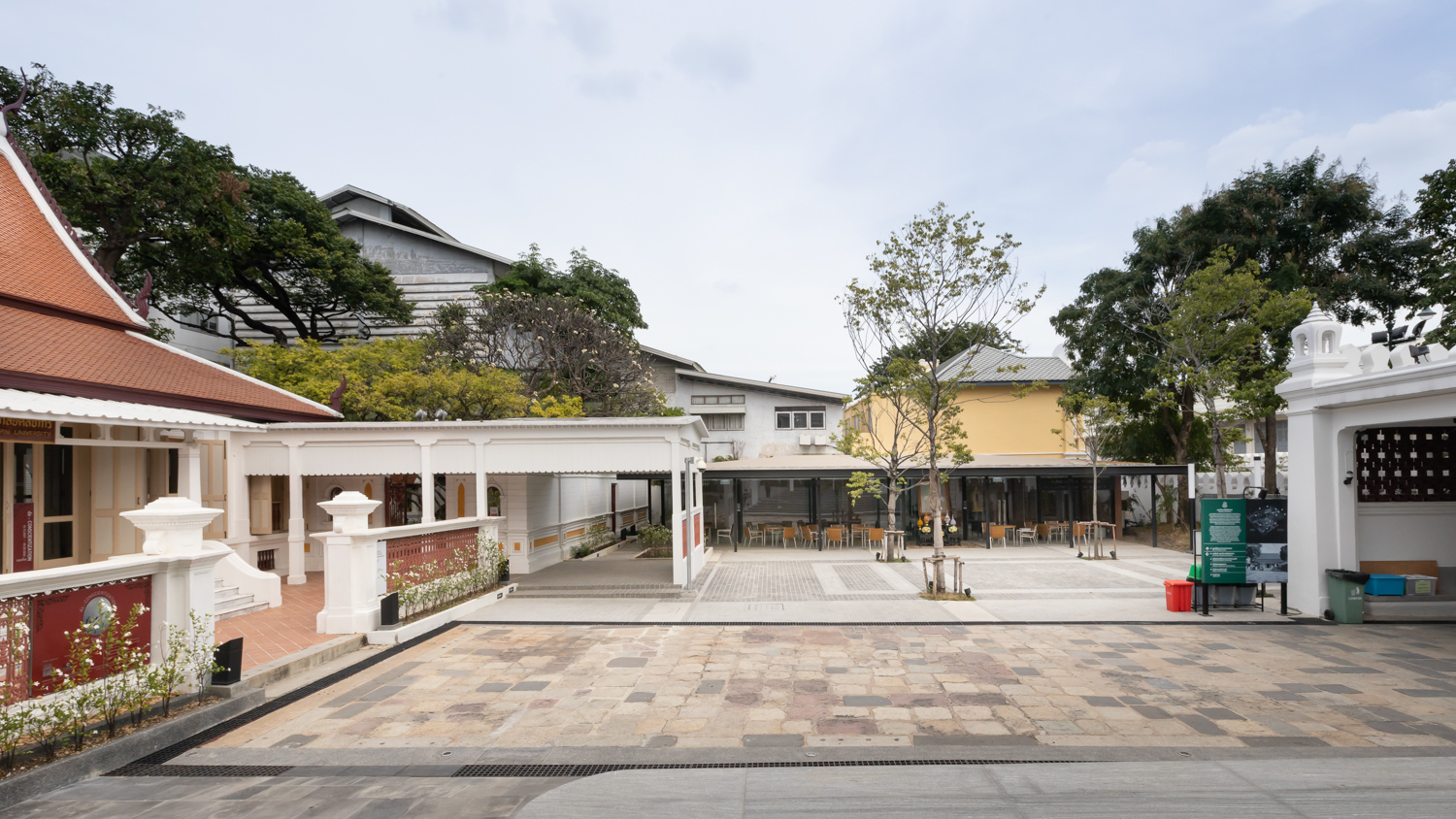
Thapra Palace Library, Silpakorn University (After renovation)
The renovation was, however, not easy, particularly when it is that of historical buildings that everyone feels a sense of ownership over. Asst. Prof. Junngurn spent quite an amount of time trying to get people to understand the new change, especially when he was planning to relocate the H.S.H. Professor Subhadradis Diskul Library in order to deconstruct the addition at the front near the main entrance designed by Prince Narisara Nuwattiwong. The relocation was needed due to the building’s constant leakage problem and the fact that it was barely used (the issue was resolved when the architect decided to fly to Chiang Mai and asked for a suggestion from Asst. Prof. Suriya Rattanaplek, the architect who designed the library building back in 1975 and he agreed with the idea of tearing the building down). He also talked with the university’s personnel working in different departments, from the Library Office to the Dean Office. Fortunately, everyone was willing to give up parts of the spaces under their supervision for the sake of the students.
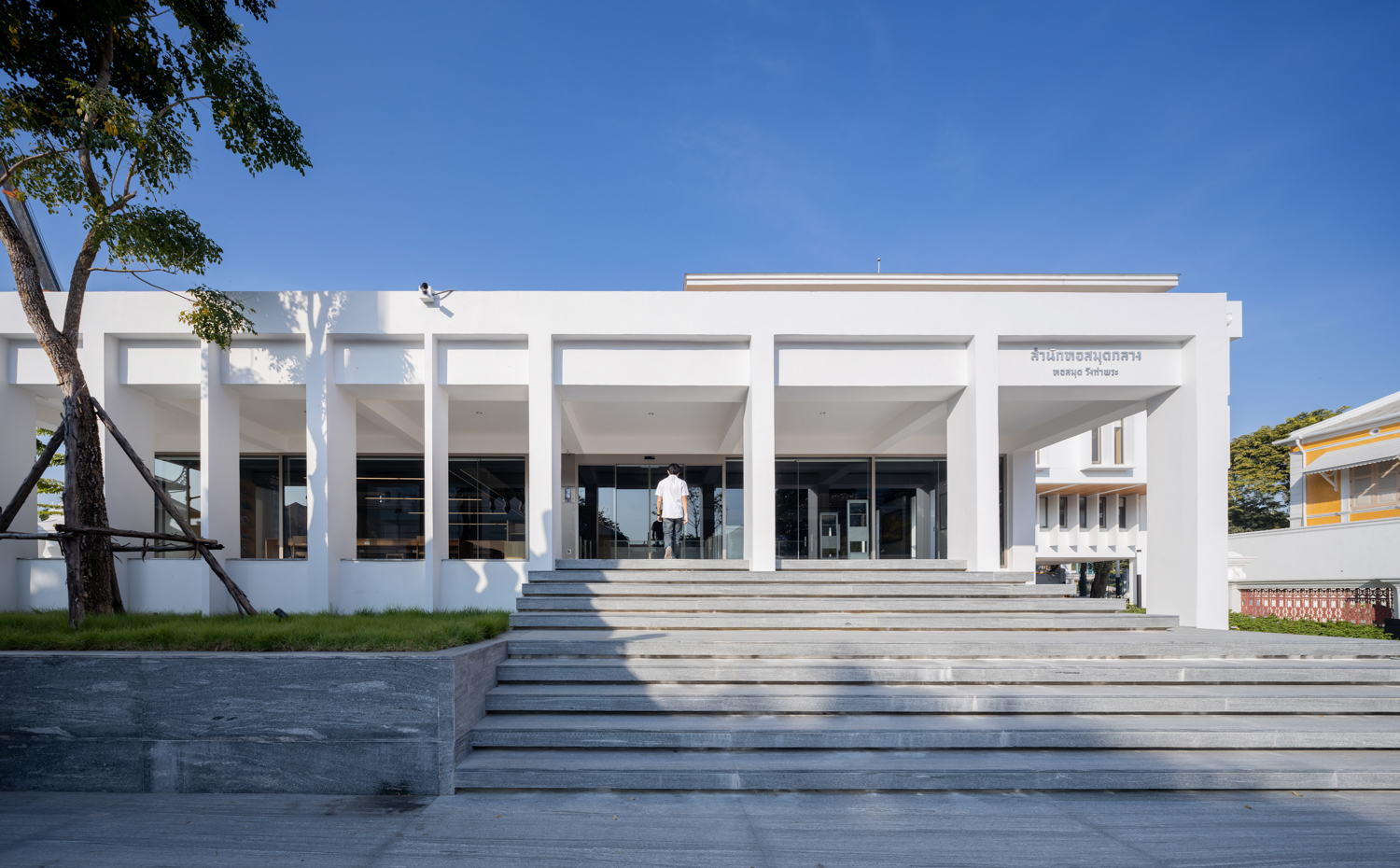
Thapra Palace Library, Silpakorn University (After renovation)
“We got rid of the air conditioning pipes that were tangled up on the already low ceiling, and gradually we reorganized the interior program by reexamining the original structure that Asst. Pro. Rattanaplek had designed.” Rendering three-dimensional images of the original structure led Asst. Prof. Junngurn to discover the building’s original grid. “We began to see the possibility of eliminating a span of the beam of the old thesis archive room, so that it would be possible to construct a double-volume space with a spiral staircase that connects to the audio visual room on the third floor of the Dean Office building, which was something that should have been done a long time ago.” Before, in order to access the audio visual room, students needed to leave the library via the front exit, walk around the library building to enter the dean’s office building, and ride an old red elevator to finally reach the room.
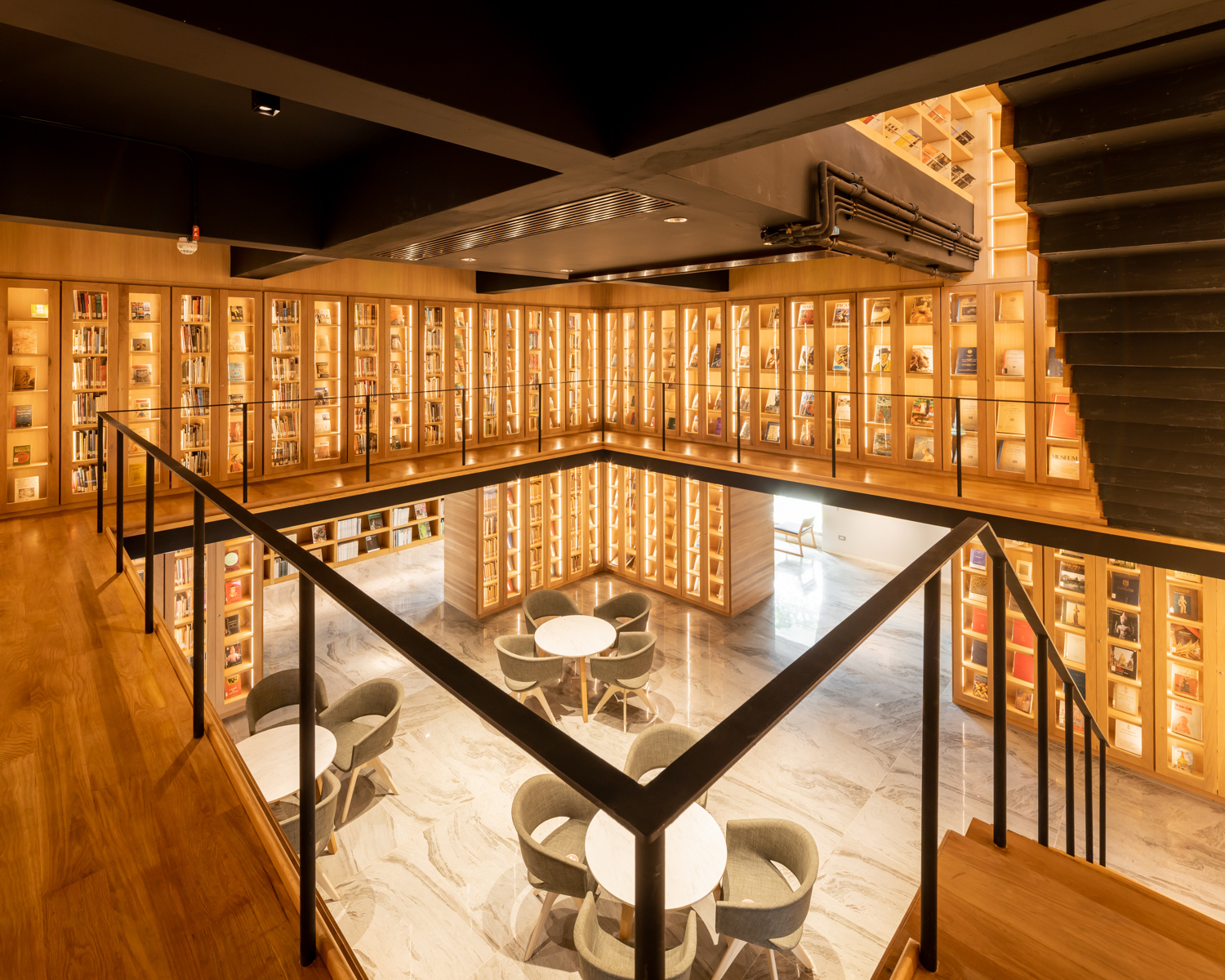
Thapra Palace Library, Silpakorn University (After renovation)
Thanks to this renovation, Silpakorn Central Library finally has a space with a high ceiling. The small staircases leading down to the underground floor are now replaced with large step seats, which add more seating area (on the ground) and enable new activities to occur inside the library. To the question regarding the number of books in the library, the original number is approximately around 117,000 books, the current number is down to 90,000. The missing books are theses, which are now being digitally archived while some of the books with low borrowing rate are kept in the book storage. “We compensate the forfeited space with the extended height of the underground bookshelves, which are designed to have a floor-to-ceiling height. Above all, with systematic management of resources, the access of information, books and bodies of knowledge can be done efficiently.”
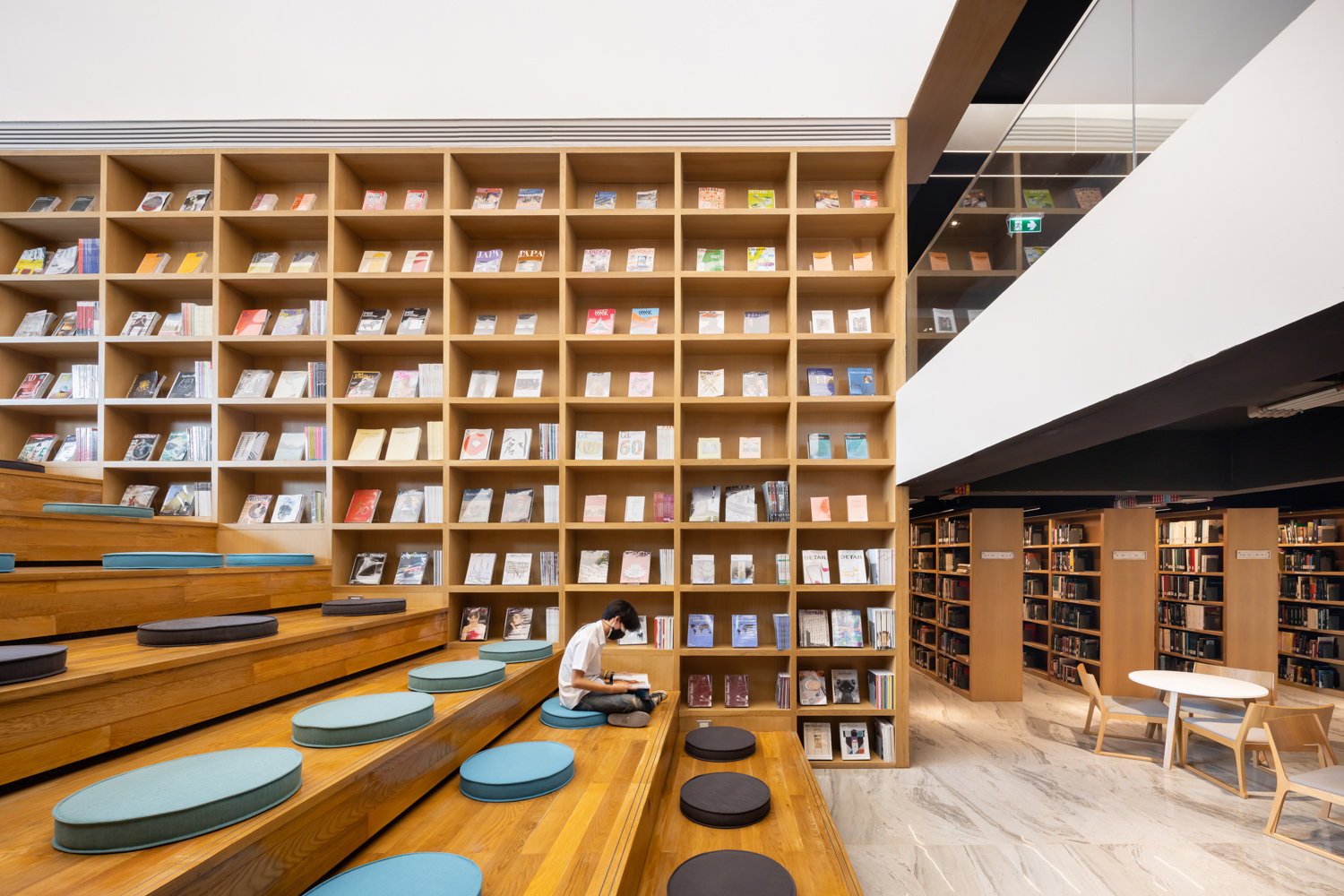
Thapra Palace Library, Silpakorn University (After renovation)

CLICK IMAGE TO VIEW IN FULL SIZE

Thapra Palace Library, Silpakorn University (After renovation)

Thapra Palace Library, Silpakorn University (After renovation)
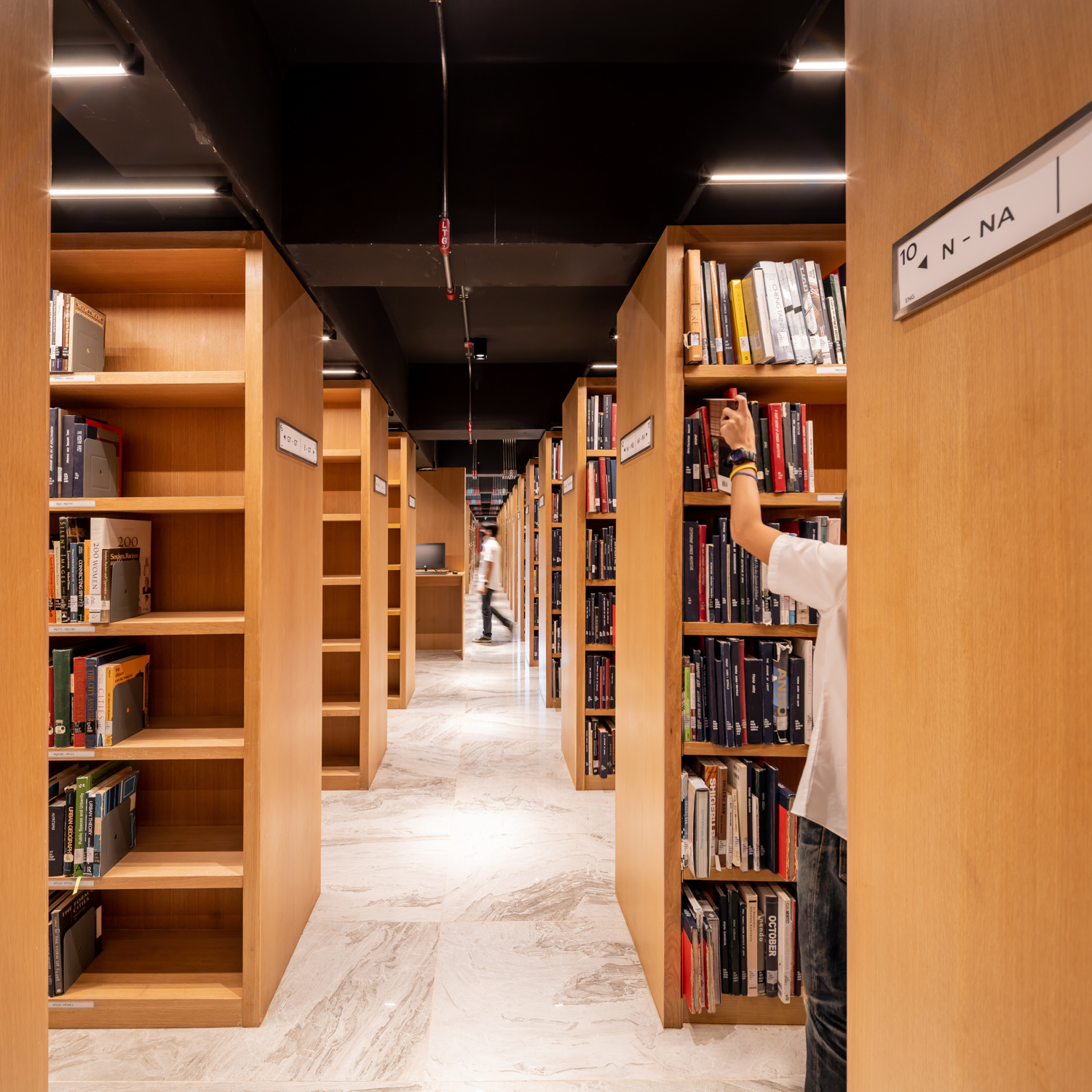
Thapra Palace Library, Silpakorn University (After renovation)
The renovation allows the spaces on the ground, underground and third floor (visual audio room) to be connected in a continuous flow. A new elevator replaces the book transporting elevator, which provides a shortcut from the underground bookshelves to the reading/computer zone on the third floor, and the Library’s office on the fourth floor. New functionalities are added such as the 24-seat mini theater and the visual library, which functions pretty much like a gallery showcasing artworks by students and professors that one can borrow home.

Thapra Palace Library, Silpakorn University (After renovation)
Another change that is a perfect embodiment of the renovation’s ‘borderless’ concept is the H.S.H. Professor Subhadradis Diskul Library, which is relocated to the center of the Central Library’s Building where there’s the highest traffic of visitors. The word relocate may be a bit misleading for H.S.H. Professor Subhadradis Diskul library is no longer a ‘room’ ( in a conventional sense of how a room is usually defined) but a part of the central hall. Asst. Prof. Junngurn chooses to display some of the rare archeology and art history books at the highlight of the interior program, which sees the highest number of visitors.
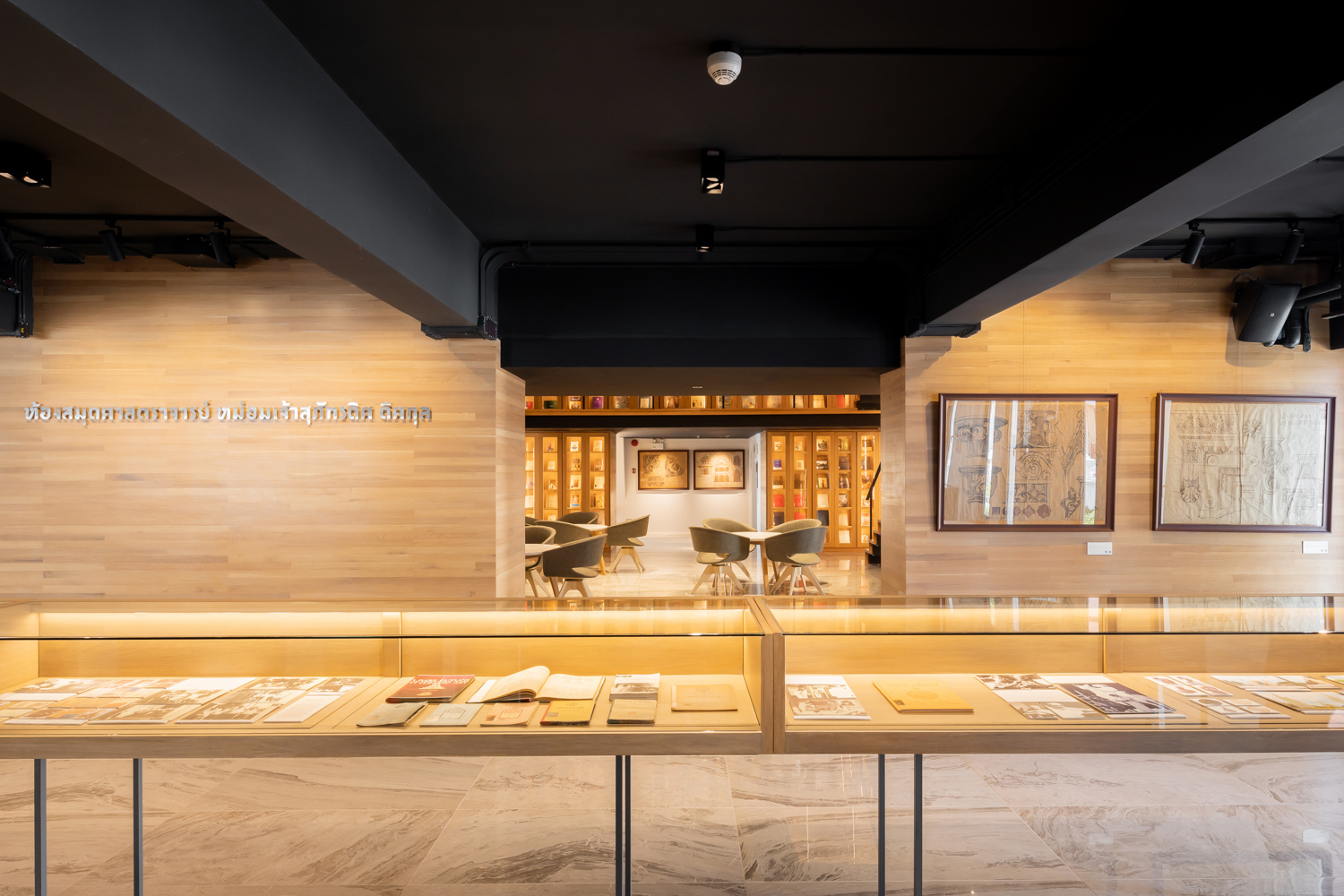
Thapra Palace Library, Silpakorn University (After renovation)

Thapra Palace Library, Silpakorn University (After renovation)

Thapra Palace Library, Silpakorn University (After renovation)
“I wanted to tear down the walls that so that the students can now have a better access to knowledge and information. I eliminated all the complicated processes. I didn’t know these steps existed until I was assigned the Director of the Central Library. I later came to know that our library has a large collection of rare books and many historically significant documents, so why were these wonderful treasures kept hidden throughout all these years?” Asst. Prof. Junngurn further added that he intended to design the area into an art space where temporary exhibitions can be hosted. Along the spiral staircase displayed a special collection of books gifted to the library by Her Royal Highness Princess Maha Chakri Sirindhorn and H.H. Prince Bidyalabh Bridhyakorn. The publications are exhibited under a meticulously curated lighting to create the atmosphere of a monumental space. “In general, I’m happy with the result. On the opening day, the honorable guests including the descendants of H.S.H. Professor Subhadradis Diskul saw the work for the first time, and they agreed with the idea and direction we took, and they’re happy that his works and legacy will now be able to reach more people.”
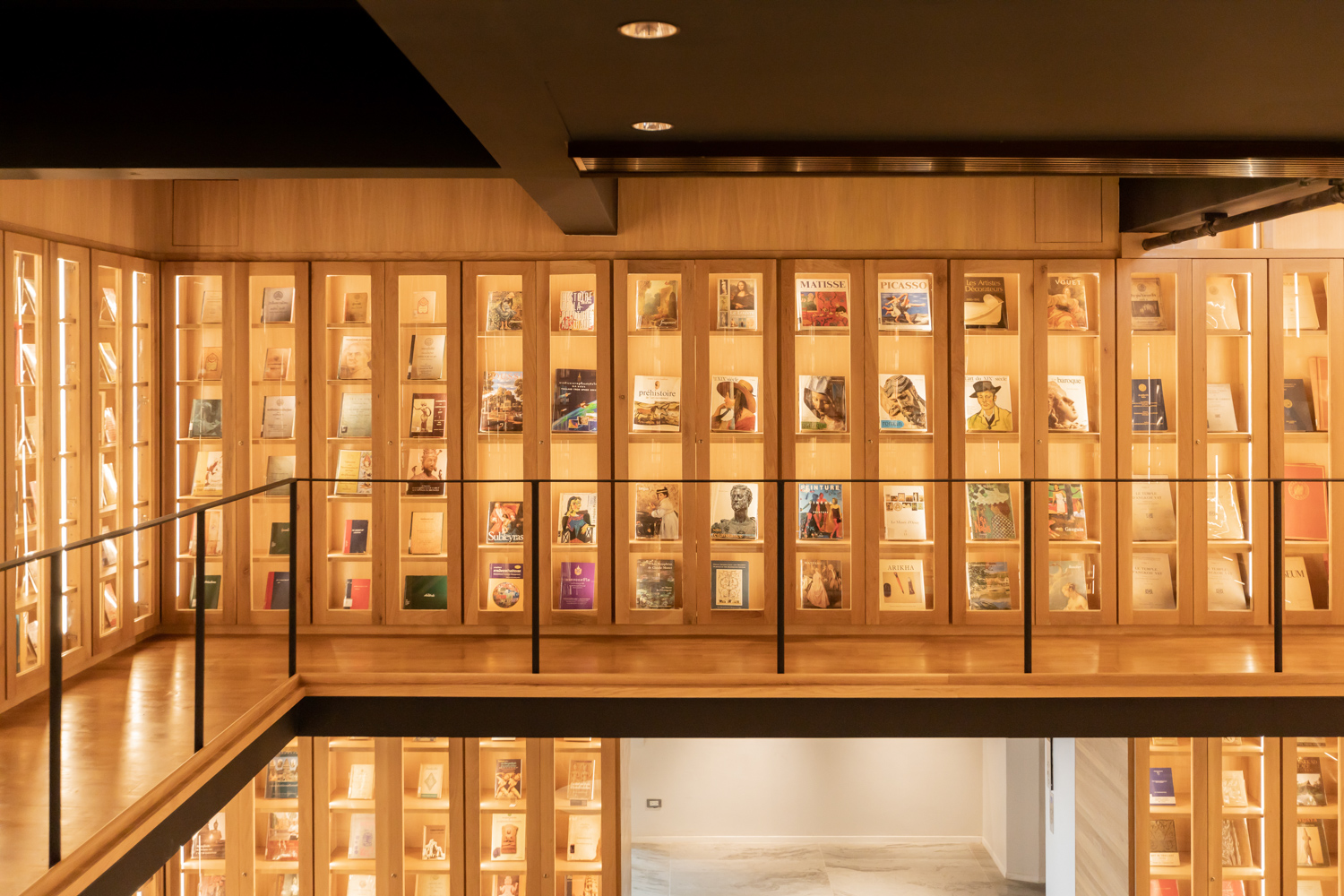
Thapra Palace Library, Silpakorn University (After renovation)

Thapra Palace Library, Silpakorn University (After renovation)
The renovation of the 50-year old library takes place in hope of keeping up with today’s users’ behaviors and how they use library spaces. One of the things the project distinctly reflects is how time has changed and the global community has reached the point where it is now a common understanding that keeping a body of knowledge alive isn’t about ‘preserving’ it as best as possible, but to promote it so that it remains in people’s interests. We are looking forward to the day when publications and information about art and archeology are read by students from other disciplines, and for the knowledge to be developed and ramified into great creative works in the future. Last but not least, we congratulate the current and future personnel and students of Silpakorn University who will benefit from this impressive renovation.

Thapra Palace Library, Silpakorn University (Before renovation) | Photo courtesy of Silpakorn University Central Library
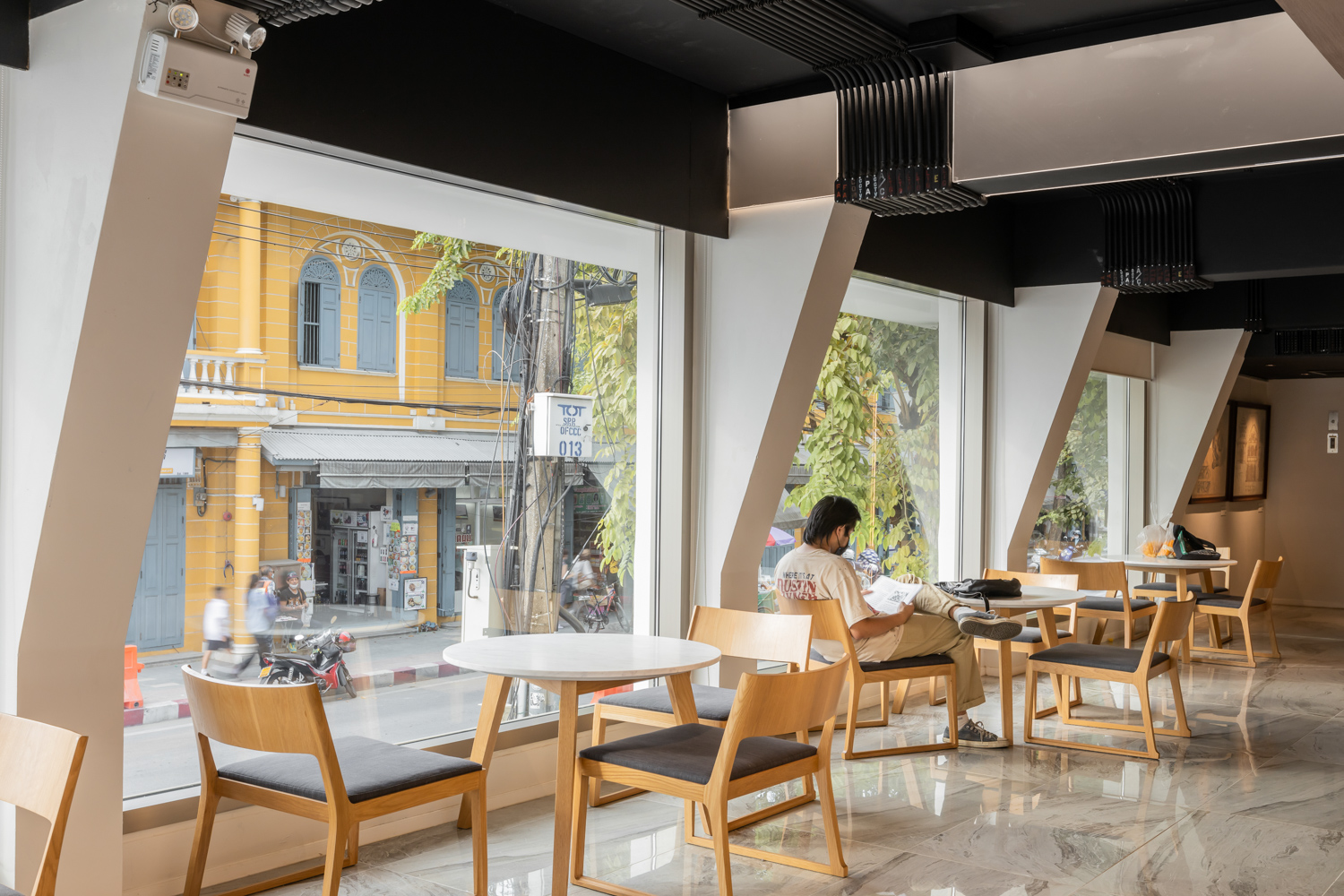
Thapra Palace Library, Silpakorn University (After renovation)
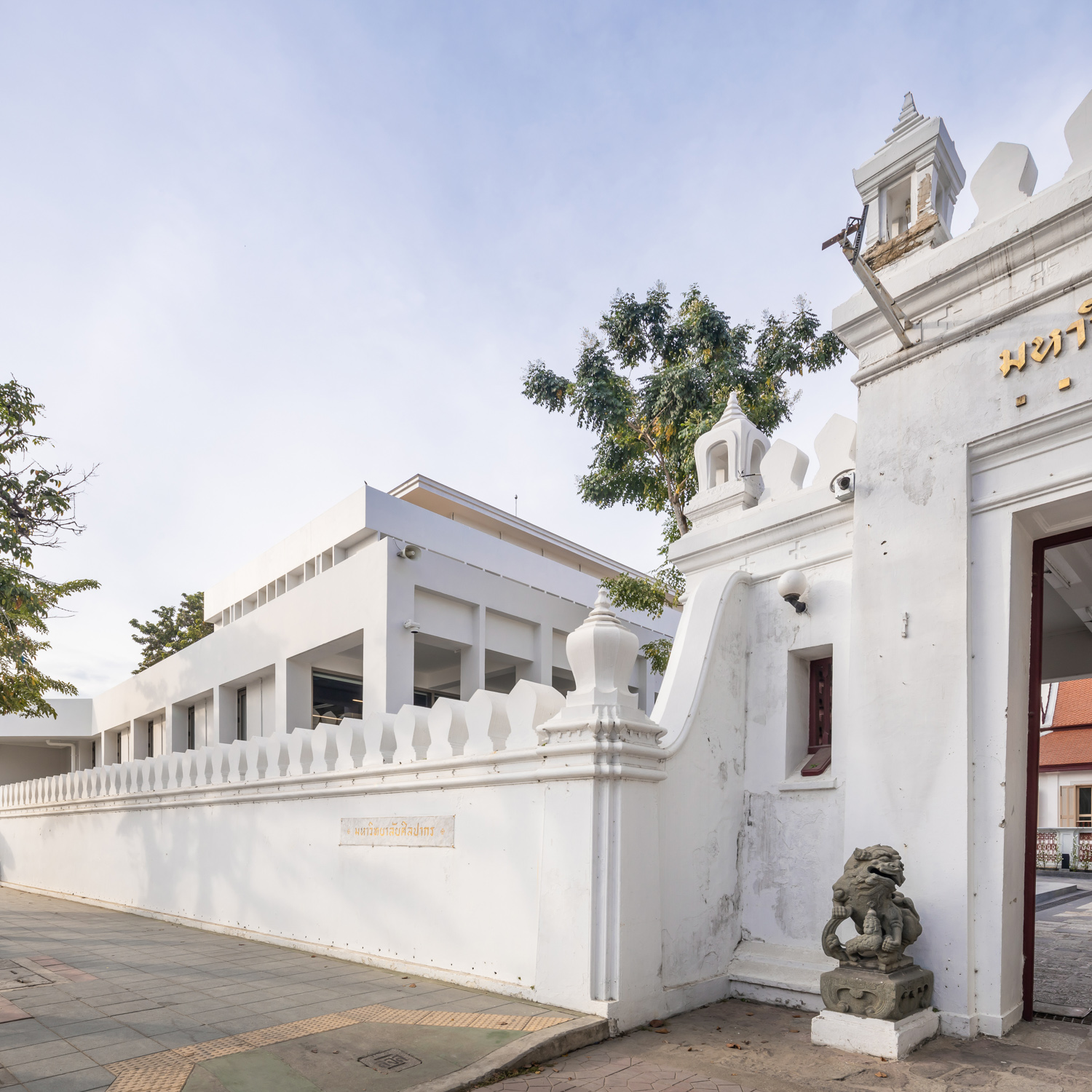
Thapra Palace Library, Silpakorn University (After renovation)
plan.lib.su.ac.th/Virtual/Thapra_Library
facebook.com/SUlibrary


